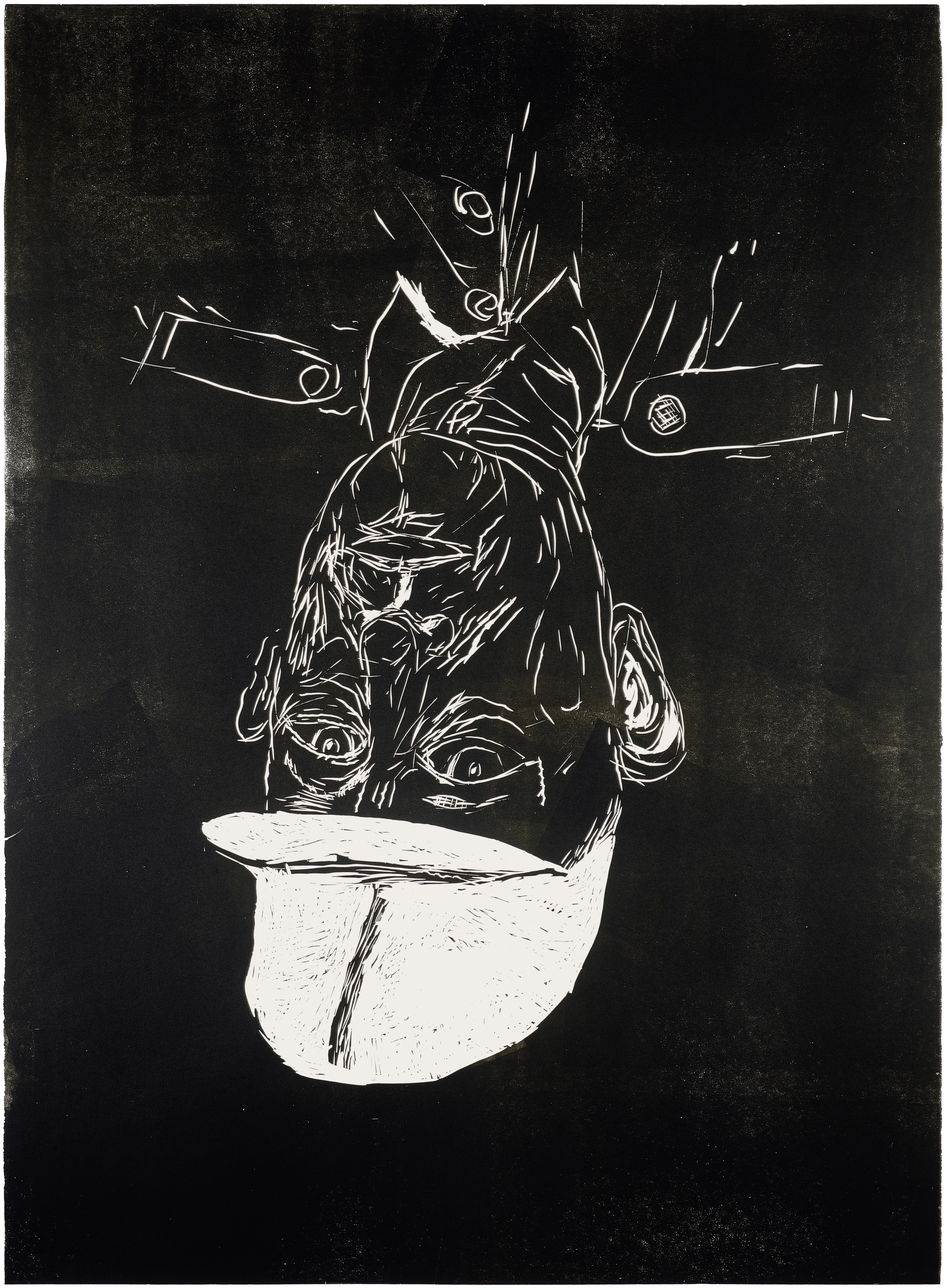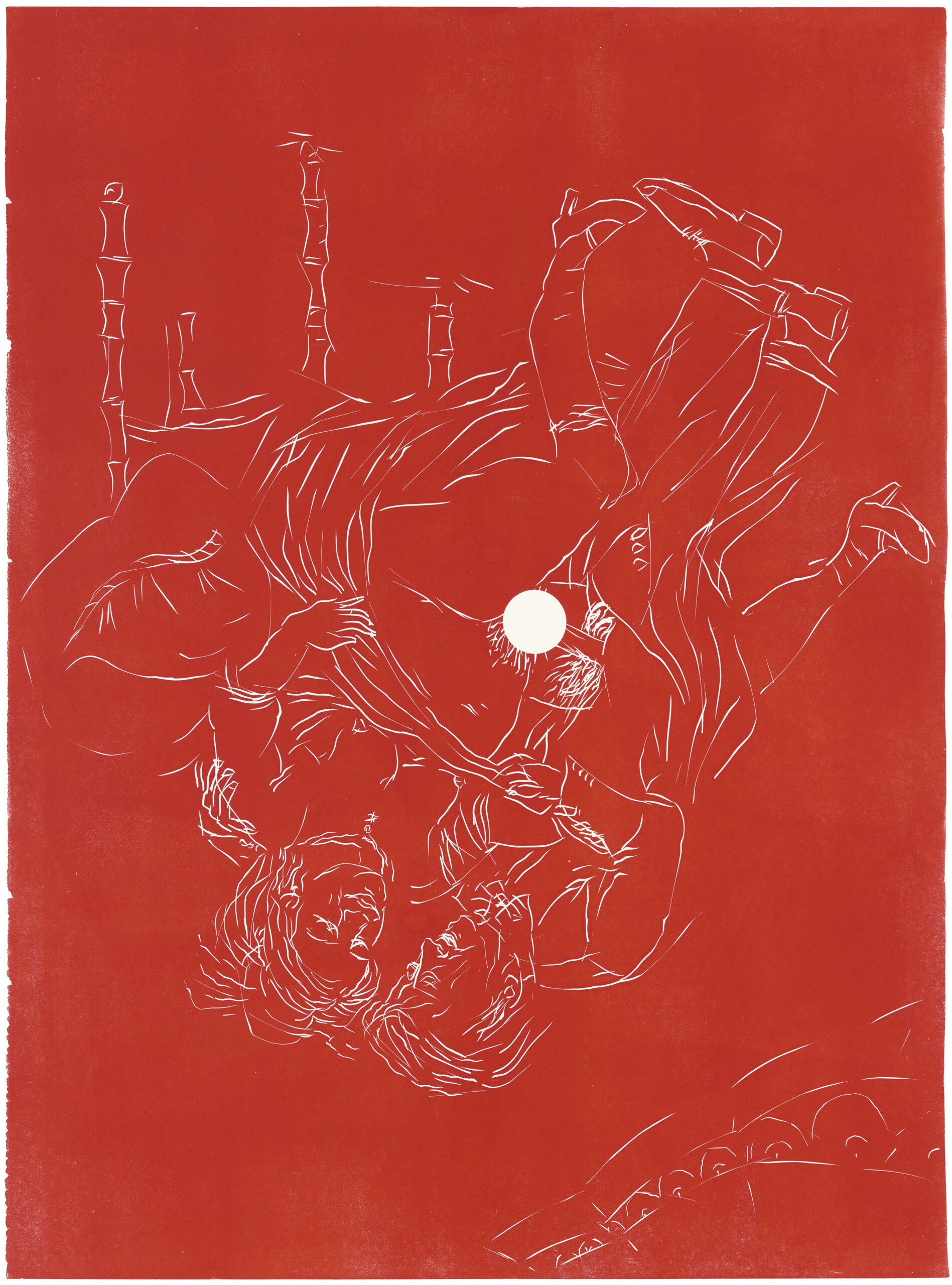
Artworks: © Georg Baselitz 2024
Are you familiar with Georg Baselitz’s works and do you know why they are presented upside down?
This world-renowned artist, recognized as one of the most significant living masters, uses this technique to challenge conventional perceptions of art.
Hans-Georg Kern, better known as Georg Baselitz, born in 1938 in Saxony, has distinguished himself on the art scene for his original approach. Expelled from the East Berlin Academy of Art for his ideas that did not conform with academic art, he moved to West Berlin where he completed his art training and began to make a name for himself.
Baselitz was never content with mere visual representation; his works invite viewers to go beyond the surface and immerse themselves in a deeper dialogue with art.
The works of Georg Baselitz

Portrait photo: © Benjamin Katz 2024
Georg Baselitz marked his career with his first solo exhibition in Berlin in 1963, which caused quite a bit of controversy and even the confiscation of some of his works.
His style evolved steadily, from the “Heroes” paintings of 1965, inspired by prints of Italian Mannerism, to the revolutionary introduction of inverted images in 1969. This feature became the hallmark of his works for the next five decades, allowing Baselitz to explore new dimensions of artistic sign and visual composition.
In the 1980s and 1990s, Georg Baselitz’s works gained international recognition through participation in significant exhibitions such as the Venice Biennale and Documenta. The year 2021 marked another highlight in his career when he was elected a foreign associate member of the Académie des Beaux-Arts. Celebrated worldwide, 2023 saw Baselitz celebrate his 85th birthday with exhibitions in Europe and the U.S., further cementing his reputation as a pillar of contemporary art.
GEORG BASELITZ’S STYLE AND TECHNIQUE
In addition to being an internationally renowned painter and sculptor, Baselitz is a skilled printmaker and devotes himself to techniques such as woodcut and etching. He has collaborated with various studios and master printmakers to create graphics that reflect his artistic vision. His skill in manipulating linoleum has enabled him to create large-scale works that challenge the conventions of representation and composition.
One of his most fascinating series was first exhibited in 2003 at the Musée des Beaux-Arts in Caen. These works, which feature 19th-century erotic scenes reinterpreted through linocuts, play with the idea of censorship and visual exploration, offering viewers a window into the complex interplay of negative images and spaces that characterize Baselitz’s art.

Artworks: © Georg Baselitz 2024
This extraordinary artist has continued to challenge and enrich the art world with his unique and provocative vision, making each work an open dialogue with the viewer. Georg Baselitz’s works are not just visual masterpieces; they are invitations to think, reflect and see the world from a completely new perspective.

